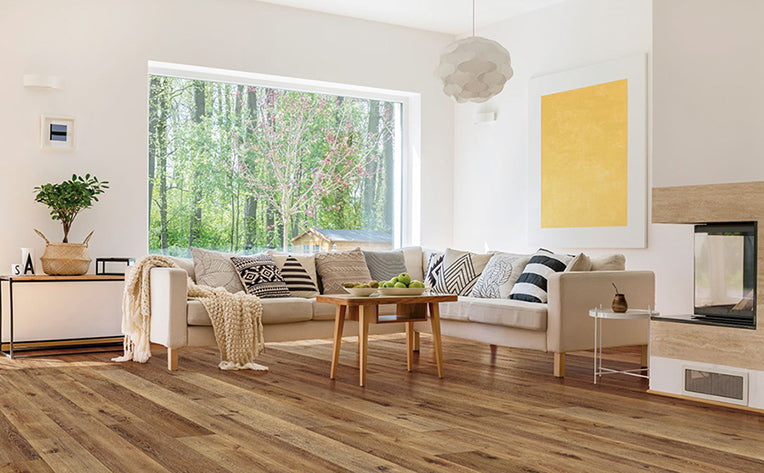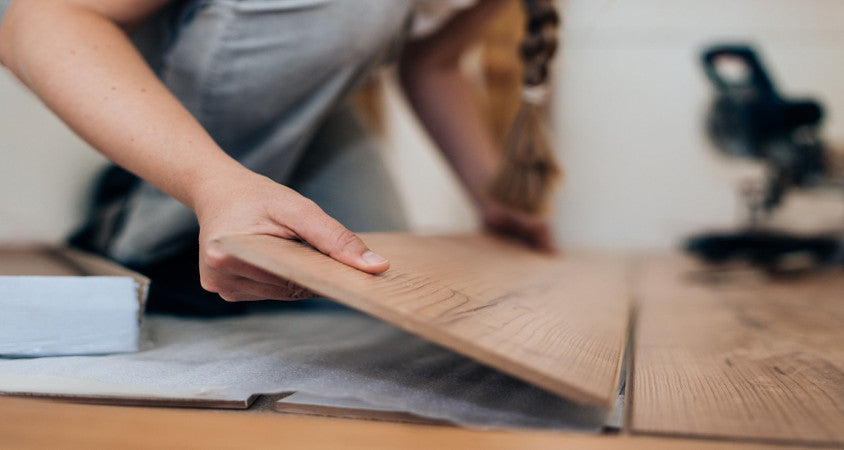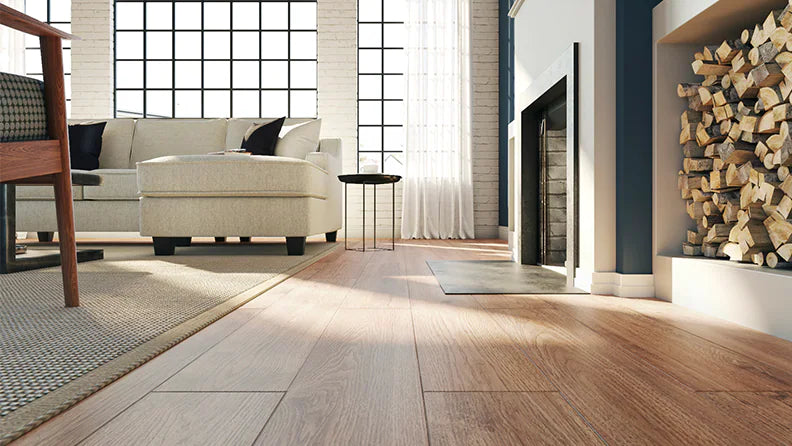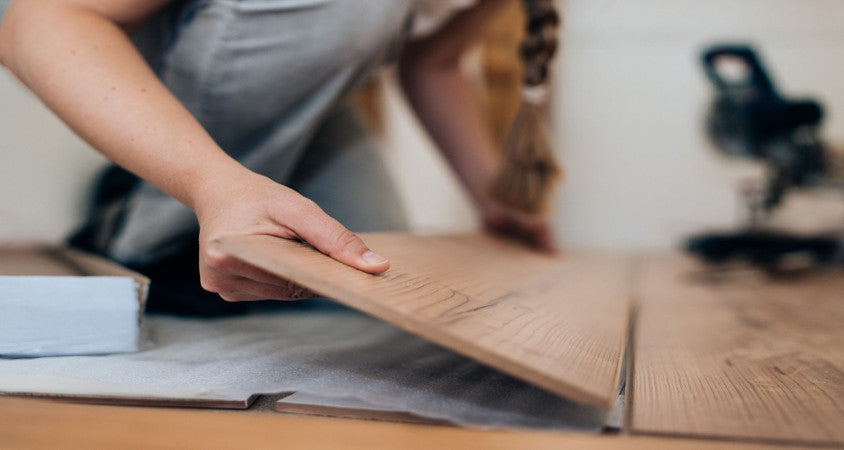What Does A Floating Floor Mean?
Have you ever heard of "floating flooring"? As its name suggests, floating flooring refers to flooring materials that are constructed using a system similar to puzzle pieces to keep them together. Having the floorboards fit together ensures a tight bond and allows your floor to remain stable without being attached to the subfloor. You can benefit from floating floors in your home in a number of ways. If you are considering a floating floor installation for your apartment or home, let's discuss the pros and cons.

There has been a significant increase in the popularity of floating floors for many different types of floor coverings. This term does not refer to a particular type of flooring material, but rather to an installation technique that can be applied to laminates, engineered hardwood, and luxury vinyl flooring. The planks (or tiles, in some cases) are interlocked edge-to-edge to form a single mat-like surface resting simply on the underlayment. It distinguishes itself from the traditional glue-down or nail-down installation method that is still used for ceramic and stone tiles, and which was once standard across most flooring materials.
Getting to Know Your Floors

If you’re wondering if your floor is a floating floor, take a look down. A floating floor may appear to be one sheet, but it is actually composed of three layers: the flooring material you walk on, an underlayment of subflooring, and a skeleton of joists providing support. This can be compared to traditional installation methods that involve nailing or gluing the flooring firmly to the baseboards. It creates a permanent attachment to the floor that lasts until it has worn out, has been torn up, and has been replaced. Floating floors are much easier to replace than traditional floors since they are placed atop the subfloor without being fixed in place.
Save Big On Floating Floors
A major benefit of floating floors is their ease of installation, as well as their affordability. Furthermore, since floating flooring is often lower cost to install, if there were to be any kind of flooding or accident in your home - or if you were to decide to do a renovation in the near future - updating floating flooring would cost much less than replacing traditional flooring.
There Are Many Options When It Comes To Floating Floors

Laminate, luxury vinyl, and engineered wood are the three types of floating floors that are available. This flooring has the ability to click into each other, forming a seal that ensures that the planks will not be able to be separated from each other. For floating floors, laminate flooring is a very popular option. It is durable, comes in a variety of wood-looking and tile-looking styles, and is typically connected with tongue-and-groove click-lock systems. The same procedure can be used to install luxury vinyl flooring, which can mimic the appearance of wood, stone, and ceramic flooring. Engineered wood flooring has become increasingly popular in recent years. Multilayers of wood are used in the construction of this flooring, which is then finished with a solid wood layer. In this way, a lightweight, durable, low-maintenance wood plank can be created. There are several types of engineered wood floors available, including floating click-locks, glued-down and nailed-down options. Another floating floor option that homeowners love is cork.
Examples Of Floating Floors

There are three types of flooring that are most commonly installed with floating floor methods:
Laminate Flooring
The most common floating floor is laminate, which is almost never glued down. The floating method allows the flooring to expand and contract without buckling in response to changes in relative humidity. The edges of laminate flooring planks are generally joined together with a modified tongue-and-groove system, sometimes referred to as "click-lock" or "fold-and-lock." Manufacturers may use a variety of proprietary methods of connecting the planks, so the shape of the interlocking grooves can vary.
Luxury Vinyl Flooring (LVF)
As with laminate planks, luxury vinyl flooring (LVF) is usually snapped together board-to-board in much the same manner as vinyl planks, although some types can also be glued to the subfloor. The boards are designed with small tongues and grooves that allow them to lock together when they are placed together. There are various types of LVF, some of which are semi-flexible and some of which are quite rigid.
Engineered Hardwood Flooring
It is common to nail or staple engineered hardwood flooring to plywood subfloors. There are, however, other brands of flooring that are installed as floating floors. Like laminate flooring, engineered hardwood flooring is constructed with a decorative surface layer glued over a plywood or MDF core.
Other flooring blog articles you may want to read:
WHAT ARE THE ADVANTAGES OF LAMINATE FLOORING
THE BEST FLOORING FOR EXTREME TEMPERATURES
PROTECTING HARDWOOD FLOORING FROM FURNITURE: WHAT SHOULD YOU DO?
